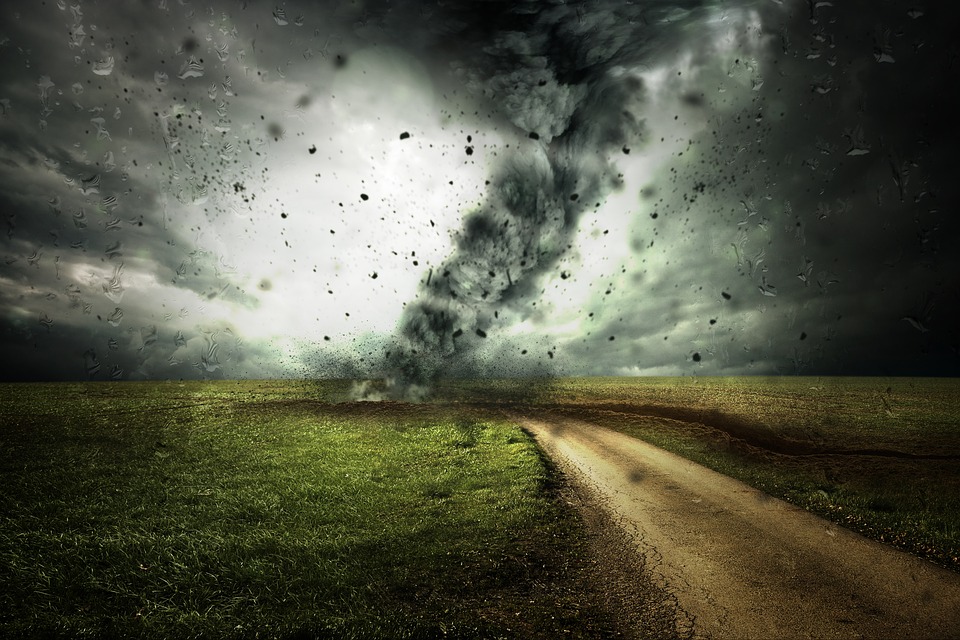By Poornima Apte
Even before Hurricane Maria struck Puerto Rico in September 2017, supplies of IV fluid bags in the United States were already running low. But given that the island is one of the major manufacturers of medical supplies, including saline bags, the natural disaster accelerated a slow-burning supply chain challenge into full crisis mode. The shortage rippled through healthcare facilities for much of the first half of 2018 and hospitals had to ship supplies from Europe to make up for the deficit.

As seen from a U.S. Customs and Border Protection, Air and Marine Operations, Black Hawk during a flyover of Puerto Rico after Hurricane Maria. (Image Credit: U.S. Customs and Border Protection photo/Kris Grogan)
Interruptions in the supply chain, either from bumps in manufacturing or delays in shipping, are fairly routine but those brought about by natural disasters can be extremely disruptive for two reasons: their unpredictability and length of recovery.
The suddenness of these events also compounds the problem. In 2016 and 2017, more than 50% of businesses experienced an unforeseen interruption and a whopping 81% of these led to the business being closed for one or more days. Natural disasters like severe hurricanes are becoming increasingly frequent, so while it is easy to become complacent and think that they might not be a factor, it is always wise to prepare ahead. Besides, the global nature of today’s supply chains mean that an event halfway around the globe can dovetail into real negative impacts on any business’s bottom line.
Here is a checklist of five action items for every business to attend to so they can minimize supply chain disruptions in the event of a natural disaster.
1. Identify the Weak Links
Take a magnifying glass through the supply chain at least every three years (if not annually) to identify potential holes for disruption. Remember that it is not just the flow of material goods that might be the problem. Even purely digital companies whose only flow of goods is information might get disrupted so it’s important to pay attention to all information and goods that form part of the daily currency of business.
Modeling an impact analysis might give businesses a window into areas for improvement and help evaluate cost-effective options for mitigation. It might be easy to fall down the rabbit hole of “what ifs” so statistical tables will help yield more objective analyses.
2. Don’t Place All Your Eggs in One Basket
This sounds like a no-brainer but companies can be tempted to source all their raw materials from one vendor to not only ensure quality consistency but also for cost factors. As the saline bags example proves, sourcing all product from one vendor is a bad idea. It’s also wise to find out where the items are being produced. In the Hurricane Maria situation, it turned out that Puerto Rico is home to manufacturing facilities for many medical manufacturers so simply choosing another manufacturer might not have helped in this case. It’s also important to follow the trail all the way to the end to make sure your supply chain is truly diversified.
The same applies
Diversification should also include
3. Develop Transparent Plans
Once businesses evaluate the weak links in their supply chain, they need to institute systematic plans for filling in the gaps. A recovery plan with clear lines of responsibility for each stakeholder will go a long way in keeping supply chains uninterrupted.
The recovery plan should identify mission-critical tasks and the employees who will execute them, including contact information for all employees involved and backup vendor information. It is a good idea to strike partnerships with multiple suppliers so they can be leaned on when, and if, the time comes.
4. Conduct a Fire Drill
Businesses must ensure that everybody on the team is familiar with the backup plan in the event of a supply chain disruption. Keeping contact information for alternative vendors handy and in an accessible spot for everyone is a good idea. A “fire drill” or a cold walkthrough to prepare for natural disasters will help identify potential flaws in execution.
5. Fine Tune Over Time
Hopefully, businesses have an opportunity to conduct a fire drill before a natural disaster strikes and the supply chain gets interrupted. But in case they don’t, every business can conduct thorough investigations and fine tune the recovery plan for the future.
Natural disasters are a fact of life but they needn’t upend the supply chain too much. With careful planning and efficient implementation of recovery plans, every business can avoid drastic disruptions when the next Hurricane Maria strikes.

